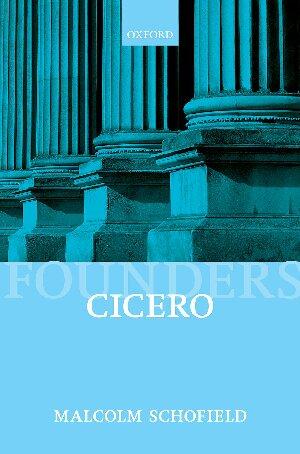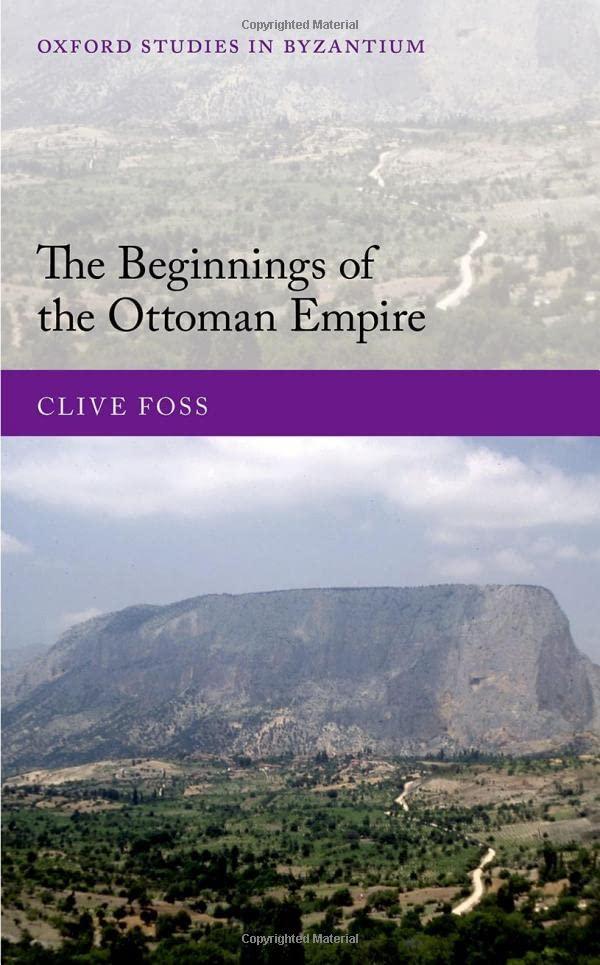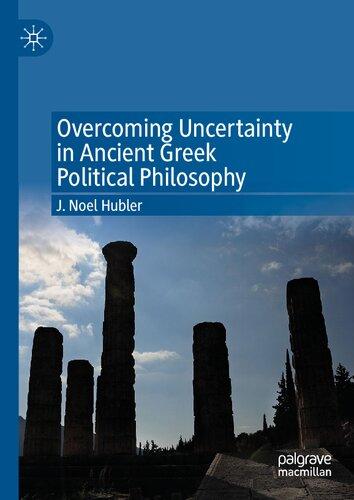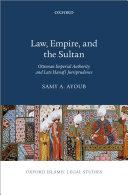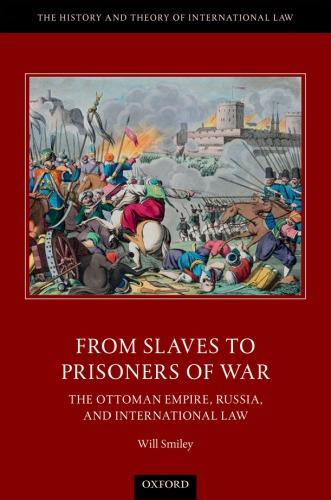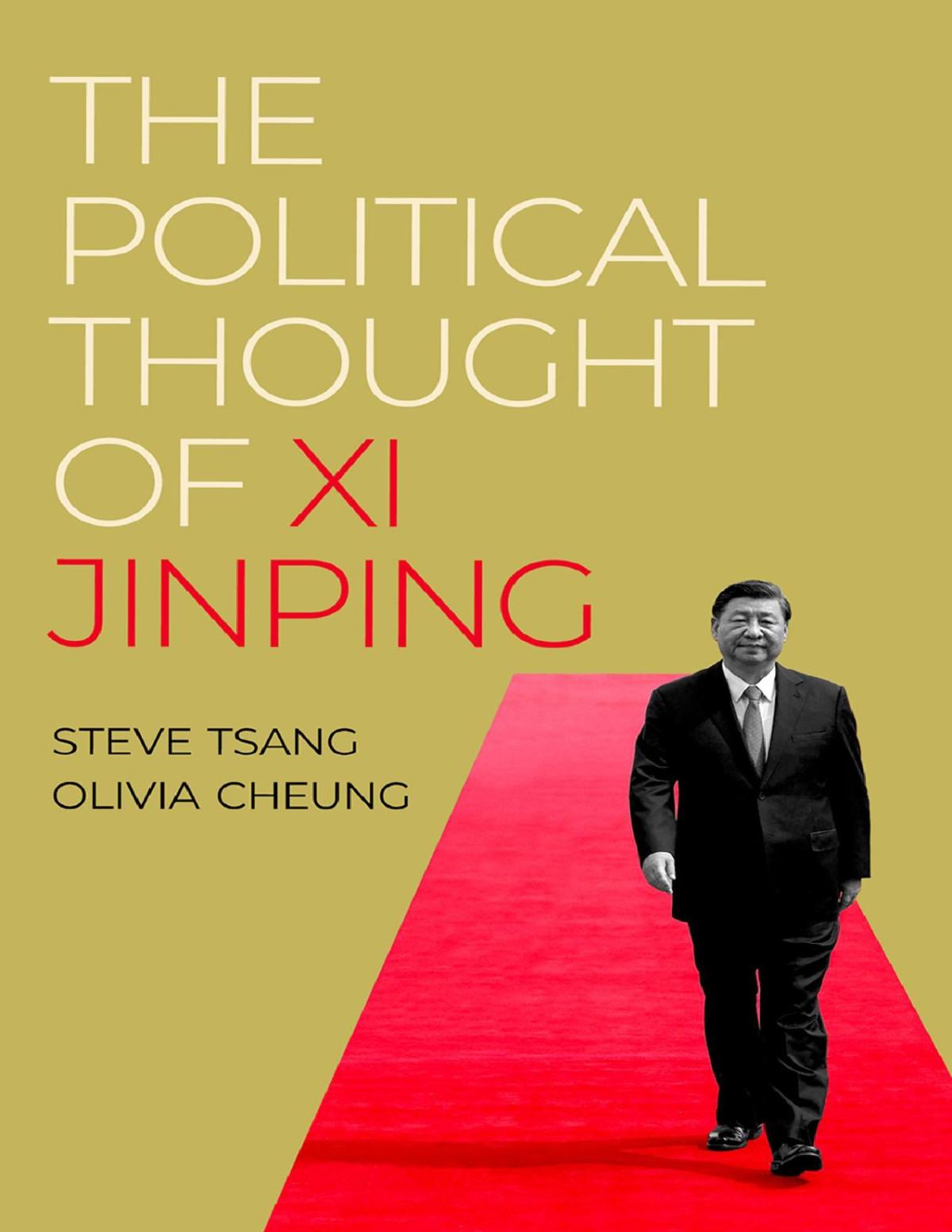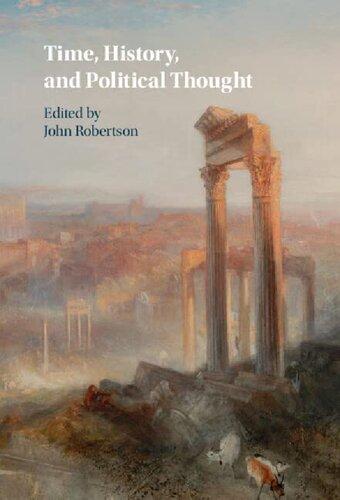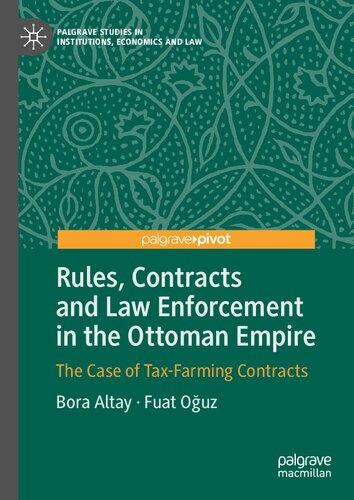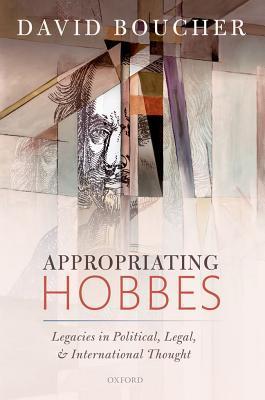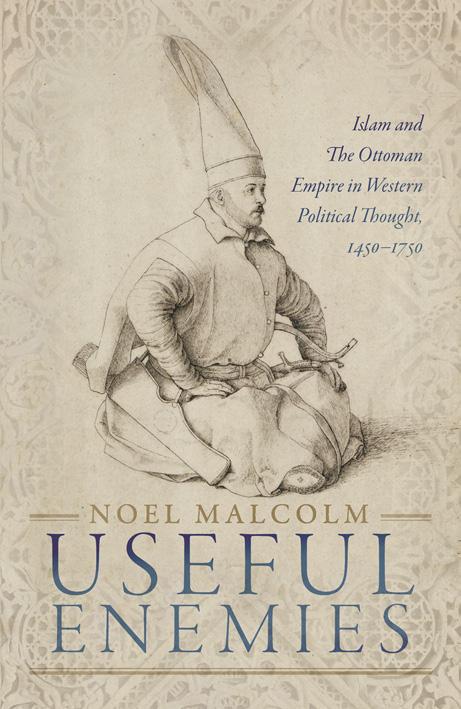Preface
In 1999 I received an invitation to give the Carlyle Lectures in the history of political thought at Oxford in the year 2001. The Carlyle Lectures are a long-running and distinguished series; this was an honour which I had no hesitation in accepting. However, when the Carlyle electors suggested that I speak about the political philosophy of Thomas Hobbes, I asked if I might give the lectures instead on a different subject which had interested me for some time: Islam, the Ottomans, and ‘Oriental despotism’ in Western political thought from the Renaissance to the Enlightenment. My proposal was accepted very graciously, but also, as it seemed to me, with slight puzzlement. The unspoken question, I sensed, was whether any audience would be interested in coming to hear lectures on such an out-of-the-way topic. I gave the lectures in February and March 2001. Six months later, on 11 September, the world changed. Friends and colleagues then urged me to turn my lectures into a book as quickly as possible, as there was now a hunger for works that might cast some light on the history of relations between Islam and the West. But I had more than one reason for demurring. I did not want to exaggerate the topical relevance of my work; while it was obviously true that present-day Western assumptions about Islam and the Islamic world have very long histories, which require careful examination, I thought it would be wrong to present any account of early modern theorizing (of the kind sketched in my lectures) as a ‘key’ to understanding relations with the modern phenomenon of political Islamism. In any case, I had some other books waiting to be written or edited, which had to take priority. And most importantly, I knew that the contents of my six lectures, if transferred to the page without substantial additions, would yield only a short and unsatisfactory book. My general subject matter was a huge one, ranging over at least three centuries, and I wanted more time to explore it in depth. That time has passed. I may have strained the patience of the Carlyle electors, who impose no formal obligation to publish, but are understandably glad to see the lecture series turned into books, as they almost always
are; nevertheless, I am glad that I did not rush into print. I feel sure that the work which I have now written is less unsatisfactory than it would have been seventeen years ago, even though I am very conscious of the fact that it gives a summary account of various interesting and important matters, compressing some things that I do know, and, doubtless, leaving out others that I do not. Specialists in particular topics will be conscious of my contractions and omissions, and of innumerable nuances which I have not had space to explore (to say nothing of all the detailed references to their own writings which I have failed to make; I have had to adopt a fairly minimalist approach to such reference-giving, having many topics to cover and no wish to clog the pages unnecessarily with bibliographical material). But I hope they may also feel that there is some benefit to be gained from placing their special topics in a broader perspective and a longer narrative.
Arranging that narrative has not been easy; here too I must ask for some indulgence. While the overall treatment is chronological, from the fifteenth century to the eighteenth, it has been necessary to devote individual chapters to particular themes or traditions. Sometimes—especially when covering the sixteenth century, when so many significant intellectual developments took place—I must follow one of these subjects for a hundred years or so, and then double back chronologically to pick up the story of the next one. None of these topics and traditions existed in a watertight compartment, of course, and some writers (such as Jean Bodin) feature in my accounts of more than one of them; a certain amount of referring back and referring forwards is unavoidable, therefore. But I am certain that the alternative, a single onward-moving account of everything in mere chronological order, would have been much less helpful to the reader.
The title of the book requires a little elaboration on several points. First, the word ‘enemies’: I seriously hesitated over using this term, as I did not and do not want to give the impression that enmity was the only essential relationship between the Ottoman and Islamic worlds and the West European Christian one. As my previous book Agents of Empire makes clear, the spectrum of interactions between the two did include various kinds of positive collaboration and cooperation in the early modern period. But the subject matter of this book is not the entire historical reality of relations between them, but rather the mental world of those in the ‘West’ who wrote in a political way about the ‘East’. A degree of enmity was built into the assumptions of the overwhelming majority of them; and even when writers praised Islam or the Ottoman system, as a significant number
of them did, they could assume that this would have all the more impact (as part of a critical argument about their own society) precisely because Western readers took them to be praising an inimical religion and an enemy state.
Secondly, the dates used in the title have been chosen merely as round figures. For practical purposes 1450 is a proxy for 1453, the year of the Ottoman conquest of Constantinople; and 1750 is close enough to 1748, the date of publication of Montesquieu’s De l’esprit des lois—a work which took the long-standing tradition of theorizing about Ottoman ‘despotism’, developed it further, and, by means of the reactions which Montesquieu provoked to his most extreme claims, helped to bring about its end.
Thirdly, ‘Western’ is used here primarily in contradistinction to the Ottoman world, and more specifically to refer to Western Christendom. Writings by Orthodox Slavs and Orthodox Greeks are not considered here; some of the former and most of the latter were, in any case, living under Ottoman rule. And while ‘Western political thought’ was certainly no monolithic entity, my focus has to be mostly on tendencies in the overall development of political thinking in Western culture. This is not a history of everything that was thought, in political terms, about Islam and the Ottomans by anyone living in ‘the West’. The Ottoman history written in Hebrew by the sixteenth-century rabbi Elia Capsali, for example, is a text of great intrinsic interest, written in a territory which can be described as ‘Western’ (the island of Crete, under Venetian rule); but that work, like some other little-known Hebrew texts, played no role in the development of Western thought more generally, so it is not discussed here.1
Fourthly, I should emphasize that the phrase ‘political thought’ in the title has been deliberately chosen in preference to ‘political philosophy’ or ‘political theory’. The ideas of several major theorists and philosophers are discussed in this book, but its scope is not confined to any canon of abstract theoretical works. Many different sorts of material contributed to the development of political thought, in a broader sense: descriptive writings by travellers, speeches by diplomats, polemical pamphlets, millenarian treatises, and so on. Although my coverage of them cannot be systematic, I have tried to do justice to the range of forms in which political thinking about, or in
1. On Capsali and his work see the recent monograph by Aleida Paudice, Between Several Worlds, esp. pp. 1–2, 79–86, 99–127.
relation to, Islam and the Ottoman Empire took place in the culture of early modern Europe.
Yet I must immediately add—again, emphatically—that this is only a history of political thought, broadly conceived, not a general cultural history of Western Europe’s experience of the Ottoman and Islamic worlds. (This point is also relevant to the choice of source materials: playwrights, for example, may often have reflected cultural assumptions about ‘the Turk’ in interesting ways, but that is not the same as making original contributions to Western political thought.) To discuss all the ways in which early modern Europe absorbed and reacted to Islam and the Ottoman Empire would require a book of much greater length, and of a much more capacious character. Where Islam is concerned, the history of Western religious thought about it in this period extends far beyond the political or politically related aspects that I discuss here; major areas of theological debate have to be left aside in this account. And as for the actual human interactions, the experiences of Muslim slaves in Europe, Christian captives in Muslim territories, Moriscos in Spain, missionaries in the Ottoman Empire, and others: I discussed these topics in another lecture series, the Trevelyan Lectures, which I gave at Cambridge in 2010. That was a very different project, and will lead, in due course, to a very different book.
On one other point I should emphasize what this book is not. It is a study of Western political thinking about Islam and the Ottoman Empire in the early modern period, not a study of Islam and the Ottoman Empire in their own right. There is a wealth of scholarly writings on the Muslim and Ottoman historical realities; I have benefited greatly from reading such works, and refer to them in many places in this book. Nevertheless, their value to the argument of this work is mostly indirect or supplementary. Historians of the Ottoman Empire do not write directly about the history of Western political thought, and I do not write directly here about the history of the Ottoman Empire.
Finally, a few linguistic points. All material from foreign-language sources is given in translation in the text, with the original supplied in the notes; the translations are mine, unless otherwise attributed. In early modern texts in most West European languages the word for ‘Turk’ (‘turc’, ‘turco’, etc.) was seldom used with the ethnic-linguistic or national meaning that it now has; the usual sense was either ‘Ottoman’ or ‘Muslim’, and I have translated it accordingly. Similarly, phrases meaning ‘the Turk’ or ‘the great Turk’, and versions of the formula ‘le grand Seigneur’, were used to mean ‘the Sultan’,
which is how I have translated them. Standard English forms of Ottoman terms are used where they exist: ‘Janissary’, ‘pasha’, ‘vizier’, and so on. Other Ottoman words—in their modern Turkish forms—are given in italics, and explained on their first appearance (which can be located using the index). More generally, I should point out that some of the Western comments on Islam and Muhammad which are quoted or summarized in this book are of a kind that would be felt to be unpleasantly crude, or worse, if made by politicians or journalists today; but they were made hundreds of years ago, and are an essential part of the story that I tell here. To understand the present we must understand the past, and we cannot do that properly if we try to force the past to conform to the standards of the present.
I am extremely grateful to the Carlyle electors for their original invitation, especially to their presiding genius, George Garnett. While I gave the lectures I was also given hospitality at All Souls College on my weekly visits to Oxford; I particularly want to say what a kind welcome I received from the late John Davis, then Warden of the College. (From time to time thereafter he would ask me when I was going to write ‘the Carlyle Lectures book’; it is a source of particular sadness to me that he did not live to see it published.) One year later it was my very good fortune to join the College as a Fellow; it has been not only an ideal place of work, but also, even beyond collegiality, a place of real friendship, and I thank all my colleagues, past and present, for that.
I am very grateful to the staffs of all the libraries and archives in which I have done preparatory reading for this book. Sixteen are listed in the List of Manuscripts at the end of the book; to those I would add the Biblioteca Marciana, Venice; Cambridge University Library; the Codrington Library, All Souls College, Oxford; the Herzog August Bibliothek, Wolfenbüttel; the Houghton Library, Harvard University; the National Library, Valletta; the Newberry Library, Chicago; the Österreichische Nationalbibliothek, Vienna; the Sackler Library, Oxford; the School of Oriental and African Studies, London; the School of Slavonic and East European Studies, London; the Skilliter Centre for Ottoman Studies, Cambridge; the Taylor Institution Library, Oxford; and the Warburg Institute, London.
Over the years, some fragments of the original Carlyle Lectures have been turned into articles or chapters and published separately. For permission to reuse some of that material here I thank Ashgate (for ‘Positive Views of Islam and of Ottoman Rule in the Sixteenth Century: The Case of Jean Bodin’); the British Academy (for ‘The Crescent and the City of the Sun:
Islam in the Renaissance Utopia of Tommaso Campanella’); and the Oxford University Press (for ‘Alberico Gentili and the Ottomans’: this text was first printed in the proceedings of a conference on Gentili organized by Professor Diego Panizza, to whom I am also extremely grateful).
This book is dedicated to the memory of Mark Whittow, a brilliant scholar as well as a deeply valued friend. He attended the original lecture series, and after my arrival in Oxford he and Helen enriched my life with their hospitality and many kindnesses. His untimely death is a source of great sadness for so many reasons; the fact that he would have read this book with interest, raising all kinds of original points in response to it, is absolutely the least of them, though it still matters to me.
All Souls College, February 2018
one The fall of Constantinople, the Turks, and the humanists
Onthe morning of 29 June 1453 a ship arrived at Venice, bearing the news that Constantinople had been conquered by the Ottoman Sultan Mehmed II. Letters describing the fall of the city, written by officials in some of the Venetian possessions on the coast of Greece, were read out to a shocked Senate in the Doge’s Palace. On the following day the Venetian government sent a messenger to Rome to implore the help of the Papacy; he arrived there eight days later, where his news caused dismay in the Vatican and panic in the streets. In Florence, Cosimo de’ Medici described the loss of Constantinople as the most tragic event the world had seen for centuries; in Naples, King Alfonso V called for unity and military action. As the fate of the Byzantine capital became known further afield, in Spain, Portugal, France, Burgundy, the Netherlands, Germany, Denmark, and England, the reaction was similar: consternation and mourning, mingled, in many cases, with a call to arms. On all sides it was understood that this was an event of huge historical and geopolitical significance.1
At first sight, there is something puzzling about the importance attributed to this one city. By 1453 the ‘empire’ of which it was the capital was a very paltry affair. The main territory belonging to it (at least nominally) was the Despotate of the Morea, covering southern Greece; but the rulers of that territory, themselves shaken by recent Ottoman attacks, had not sent any troops to assist in the defence of Constantinople, and would shortly ask
1. Setton, Papacy and Levant, ii, pp. 138–40; Schwoebel, Shadow, pp.1–4. For the first reactions see Pertusi, La caduta; for reactions in the Eastern Orthodox world see Dujc ev, ‘La Conquête turque’. Franz Babinger comments that ‘Everywhere it was felt that a turning point in history had been reached With good reason the year 1453 has been designated as the dividing line between the Middle Ages and the modern era’ (Mehmed, p. 98).
for Ottoman help in suppressing their own rebels. During the previous century large parts of the Balkans had been taken over by the Ottomans, who had seized Thrace and Bulgaria, reduced Serbia to vassal status, conquered Salonica from the Venetians, taken control of most of Albania, and intervened repeatedly in the kingdom of Bosnia.2 In purely strategic terms the capture of Constantinople was a mere mopping-up operation. Nor had the Western powers that mourned the loss of the Byzantine capital made much effort to save it. One Genoese commander did supply a contingent of soldiers at the start of the campaign; but thereafter both Venice and Genoa, the major commercial powers (and fierce rivals) that operated in Constantinople and the Black Sea, stayed their hands until it was almost too late, finally sending or loaning small groups of ships that could make no difference to the final outcome. The Pope had sent a more or less symbolic contingent of 200 armed men in 1452, and his modest naval contribution in April 1453 was also too little, too late.3 Other Western powers, to whom the last emperor, Constantine Palaeologus, had sent desperate requests for help, had done even less.
To some extent, therefore, the sense of dismay and grief expressed by many Italian and West European rulers may have been quickened by a feeling of bad conscience. (This was perhaps especially true at the papal Curia, where the official policy for several decades had been to insist that the Byzantine authorities fulfil their pledges of ecclesiastical union with Rome as a condition for any help.4) Another factor contributing to the emotional reaction was the nature of some of the early reports, which were filled with stories of atrocities—stories which, in turn, were taken up and amplified by those activists in the West who wished to galvanize their rulers. It was claimed that 40,000 men had been either blinded or killed by the Ottomans, that nuns and virgins had been raped on church altars, that monks had been hacked to death, and that rivers of blood had flowed through the streets.5 Acts of violence, desecration, looting, and killing certainly took place during the three days of plunder which Mehmed granted to his army. This was standard procedure for a city which had resisted calls to surrender, and overall the devastation may have been less severe than that inflicted on the city by its Catholic, West European invaders 249 years earlier. The population
2. See Fine, Late Medieval Balkans
3. Weber, Lutter contre les Turcs, p. 131 (papal contribution).
4. Ibid., pp. 128–30. 5. Schwoebel, Shadow, pp. 3, 7–9, 12–13; Meuthen, ‘Der Fall’, pp. 4–6.
was indeed seriously depleted, not by mass murder but by the carrying away of captives for sale as slaves. But Mehmed took quick action to secure the future of Galata, the neighbouring city dominated by Western merchants; within less than a year he also appointed a new Greek patriarch and guaranteed the essential rights of his Church, to reassure the Orthodox population, and concluded a treaty with Venice, granting it full trading privileges in the Ottoman Empire.6 Within a fairly short time, therefore, those West European powers that had direct commercial links with Galata and Istanbul would have been aware that the Sultan was a rational, pragmatic ruler, keen to promote prosperity and stability in his new possession, not a monster driven by fanaticism and a thirst for blood. And yet the tendency to portray the fall of Constantinople as a cataclysmic event continued unabated.
Part of the reason for this was symbolic. Although there was little Western interest in the history of the Byzantine Empire—which would remain a curiously neglected subject until the last part of the sixteenth century— there was of course a general understanding that Constantinople was the city of Constantine, the son of St Helena (finder of the True Cross) and the first emperor to favour Christian worship throughout the Roman Empire.7 It was the ‘New Rome’, which had maintained the Roman imperial tradition after the barbarian invasions of Italy and the Western Empire, and it was the seat of the patriarch of a major Christian Church, albeit a schismatic one. These facts gave Constantinople a historico-symbolic importance of a kind that a city such as Salonica could never attain. When Niccolò Sagundino, an experienced Greek official in Venetian service, addressed an admonitory ‘oration’ to King Alfonso V of Naples at the beginning of 1454, he explained that Mehmed II was influenced ‘by certain prophecies and preachings that promise him the conquest of the kingdom of Italy and the city of Rome; he has said that the seat of Constantine was granted to him by heaven, and that that seat is not Constantinople but Rome, and that it seems to him both just and very appropriate that, having taken the daughter-city by force, he may also take the mother-city.’8 As we shall see, the notion that Ottoman sultans
6. Babinger, Mehmed, pp. 101–5.
7. On the slow development of Western interest in Byzantine history see Pertusi, Bisanzio e i Turchi, pp. 3–66.
8. Pertusi, La caduta, ii, p. 132 (‘vaticiniis et praedicationibus quibusdam quae sibi regnum Italiae et urbis Romae expugnationem promittunt; ait sibi concedi coelitus Constantini sedem, hanc vero Romam esse, non Constantinopolim, videri aequum valdeque congruere, quasi filiam vi ceperit, hanc etiam matrem capere posse’). On Sagundino see ibid., ii, p. 126, and Meserve, Empires of Islam, pp. 106–12.
might claim the historic rights of the Roman emperors would trouble a number of Western writers over the next century and a half.
The main fear, though, arose simply from contemplating the power of the Ottoman military machine and the likely direction of its future attacks. Although the defence of Constantinople had been thin in terms of manpower, the city’s massive fortifications had posed a challenge which any Western army of the period might have found insuperable. Mehmed’s army, estimated at more than 200,000 men, was of a size that none of the West European powers could possibly match; and his mastery of the latest artillery technology equalled that of the best of them. With the seizure of this city, he consolidated his position in the Balkans (making it easy to pick off other minor Christian outposts to the east, on the Crimean coast and at Trebizond); his future advances, once the south of Greece was fully conquered, were naturally assumed to be westward. Twice in the previous sixty years European powers had mounted large campaigns against the Ottomans, fighting them at Nicopolis, on the lower Danube, in 1396, and at Varna, on the Black Sea coast, in 1444. Both had ended in heavy defeats for the Catholic Christians, but in each case this happened only after an offensive by a crusading force which had penetrated deep into the Balkans. Now all the indications were that in future the offensive campaigns would be launched in the opposite direction, by the Ottoman Sultan against Catholic Europe. It was military reality, much more than any concern about the revival of imperial rights, that made Western thinkers and rulers so suddenly fearful and, for the first time, so very defensive. A fundamental shift in the balance of power had taken place—or rather, had finally become impossible to ignore. Soon after the fall of Constantinople, the Venetian chronicler Languschi wrote of Mehmed II that ‘he now says that the times have changed, so that he is to move from east to west, just as the westerners went eastwards in the past.’ As Enea Silvio Piccolomini, the future Pope Pius II, wrote to Leonardo Benvoglienti in September 1453: ‘the Italians used to be the masters of the world; now the empire of the Turks is beginning.’9
For people whose historical understanding was, at its deepest levels, shaped by religious belief, such a momentous change had to have a theological explanation.The easiest way to account for the fall of Constantinople
9. Pertusi, La caduta, ii, pp. 64 (Piccolomini: ‘Fuerunt Itali rerum domini, nunc Turchorum inchoatur imperium’), 70 (Languschi: ‘Hora dice esser mutato le saxon [sic: for ‘stagioni’] di tempi, sì che de oriente el passi in occidente, come gli occidentali in oriente sono andati’).
was to blame the sins of the Greeks, who had been viewed as schismatics since the eleventh century, and most recently had rejected the pledge given by their own representatives at Florence in 1439 to accept union with the Roman Church. This approach chimed with a longer tradition of antiGreek feeling in the West, as exemplified to a rather startling degree by the poet Petrarch, who, in the mid-fourteenth century, had denounced the Orthodox Greeks as the worst sort of heretics and had called repeatedly for a crusade against Constantinople.10 Such attitudes also helped to shape some of the earliest Western attempts to account historically for the rise of Islamic power in the East at the expense of the Byzantine Empire: writing in the 1430s, when attempts to pressure the Greek Church into union with Rome were at their most intense, the Augustinian friar Andrea Biglia had concluded that the Eastern Christians had lost control over so many of their territories as a punishment from God for the heresies into which they had fallen.11
One of the earliest accounts of the conquest of Constantinople, by the eyewitness Leonardo Giustiniani, Catholic Archbishop of Mytilene, confidently ascribed the Ottoman victory to the fact that God had withdrawn his support for the Greeks when they refused to implement the union with Rome agreed in 1439.12 (Soon afterwards, the Orthodox Metropolitan of Moscow based the same conclusion on the opposite premise: God had punished the Byzantines for having agreed to union with Rome in the first place.13) The prominent humanist scholar Poggio Bracciolini, writing in 1455, accused the Byzantine Greeks of sabotaging the Crusades, reneging on their promises of union, and, for good measure, being so avaricious and so lazy that they refused to spend their own immense wealth on the defence of their city, preferring to beg for help from the Papacy instead. Their defeat occurred, he concluded, ‘not by chance, but by divine judgment’.14 Other writers agreed: Ubertino Puscolo, a humanist scholar from Brescia who was studying in Constantinople at the time of the conquest, wrote that if an angel had appeared, promising to drive away the Ottoman forces so long as the Greeks agreed to union with Rome, they would have accepted Ottoman rule instead. (The question of union had in fact bitterly divided the Greek churchmen, and it was true that some preferred the temporal rule of the
10. Bisaha, Creating East and West, pp. 120–1. 11. Webb, ‘Decline and Fall’, p. 207.
12. Meserve, Empires of Islam, p. 30. 13. Strémooukhoff, ‘Moscow’, p. 88.
14. Meserve, Empires of Islam, p. 30 (Giustiniani); Bisaha, Creating East and West, p. 126 (Poggio).
sultan, under whom their Church could retain its nature, to the ecclesiastical primacy of the Pope.) Puscolo also gave a very jaundiced account of the Constantinopolitans, portraying them as lazy and corrupt people who had lost all Christian virtue; for their sins, they were at last abandoned by God.15 This view became commonplace. Writing a travelogue in the 1480s, the Franciscan friar Alessandro Ariosto (who went to the Levant on a papal mission to the Maronite Arab Christians) devoted several pages to denouncing the Greeks, explaining that they had been conquered and scattered as a divine punishment for their ‘impietas’.16 And in the 1520s Ludovik Crijevic Tuberon, a Benedictine humanist scholar from Dubrovnik, would solemnly declare: ‘as the outcome showed, God had foreordained the destruction of the Greeks, not only because they had rejected the authority of the Roman Pontiff, but also because they had completely abandoned the true rite of the Christian religion.’17
Such a view, though focused in this case primarily on the ‘schism’ of the Orthodox Church, belonged to a larger pattern of theological thinking in which the Ottomans functioned as the ‘scourge of God’. The underlying template for all such theological interpretation was to be found in the many passages of the Old Testament where the children of Israel were subjected to defeats, enslavements, and other tribulations, at the hands of human oppressors but in a way that expressed God’s corrective wrath. Some of the possible implications of this manner of thinking would take time to emerge, being elaborated much more fully in the religious literature of the sixteenth century: for example, the idea that the Ottomans’ lack of virtue proved that their success had a divine cause, not a human one, or, alternatively, that their role as instruments of divine punishment was confirmed by the fact that they did possess precisely those virtues that the sinful Christians lacked.18 And there is a more basic reason why the ‘scourge of God’ theme became
15. Schwoebel, Shadow , pp. 17–18; Filelfo, Amyris , p. 7. On Greeks preferring the sultan to the Pope see Evert-Kappesova, ‘La Tiare ou le turban’. On humanists blaming the Greeks for the fall of Constantinople see also Hankins, ‘Renaissance Crusaders’, pp. 131–2.
16. Ariosto, Itinerarium, pp. 137–42.
17. Crijevic Tuberon, Commentariorum libri XI, p. 220 (‘Destinauerat enim Deus, vt rei euentus affirmauit, Graecorum nomen delere: propterea, quod non modo ius Romani spreuerant Pontificis, sed etiam a recto Christianae religionis ritu iam fere defecerant’). He also emphasized that it was the Byzantine Greeks who, for their own short-sighted purposes, had first invited the Ottoman Turks into Europe (pp. 220–1). On Crijevic (‘Crieva’, ‘Cerva’) Tuberon (‘Tubero’), who had studied in Paris before returning to his native Dubrovnik, see Pertusi, ‘Giovanni Battista Egnazio’, pp. 486–7; Rezar, ‘Dubrovacki humanisticki historiograf’.
18. For the former view see Andreas Osiander, quoted below, p. 86. For the latter, see Theodore Bibliander, Ad socios consultatio, sigs. d8r–e2r.
prominent only at a later stage: the biblical template implies that the victims of this divine punishment are, after all, God’s chosen people. This implication, a source of consolation as well as a spur to moral and spiritual renewal, could be deployed very effectively by Western and Central European writers addressing their own populations when they came under Ottoman attack, but would not appeal to Catholic writers dismissing the sufferings of Orthodox Greeks as condign punishment for their schism.19 The first significant use of the ‘scourge of God’ argument in fifteenth-century Catholic Europe emerged among Hungarian writers, after Mehmed II’s large-scale (but ultimately unsuccessful) campaign to seize the key Hungarian stronghold of Belgrade in 1456: it was employed both by the humanist Archbishop of Esztergom, János Vitéz, and by the Hungarian-Croatian poet Janus Pannonius (János Csezmiczei, Ivan Cesmicki), whose poem ‘De inundatione’ portrayed the Hungarians as suffering a physical flood as a punishment for the sins of all Christians.20
So long as the divinely sanctioned role of the Ottomans was confined to punishing a schismatic Church, there was no difficulty whatsoever in thinking that, for Catholic Christians, the appropriate response to any Ottoman advances was to go to war against them. All theological interpretation of the Ottoman threat began with the fact that these were non-Christians and, in some obvious sense, enemies of Christianity. The medieval crusading tradition—or, at least, the tradition of thinking in terms of crusades, planning them and declaring them—was still alive and active in fifteenthcentury Europe; it was a papal bull of 1443, formally proclaiming a crusade against the Ottomans, that had launched the campaign which ended so disastrously at Varna in 1444. So, within three months of learning the news of the fall of Constantinople, Pope Nicholas V issued a crusade bull, describing Sultan Mehmed as a fierce persecutor of Christianity and identifying him with the seven-headed dragon of the Book of Revelation. He called on all the rulers of Europe to defend the Christian faith, and offered a full indulgence to all those who would take part in the campaign.21
19. Orthodox Greeks, on the other hand, did use the ‘scourge of God’ argument after the fall of Constantinople: see Giombi, ‘La cristianità’, pp. 171–3.
20. Kiss, ‘Political Rhetorics’, pp. 143–4. In the sixteenth century this line of thought would be taken up in Hungary by both Protestant and Catholic writers, sometimes with an explicit parallelism between the Hungarians and the Jews: see Fodor, ‘View of the Turk’, p. 118; Jankovics, ‘Image of the Turks’, p. 268; and Oze, Apocalypticism, pp. 121–3.
21. Schwoebel, Shadow, p. 31; Housley, Crusading and Ottoman Threat, p. 18.
One ruler at least did respond enthusiastically. The Duke of Burgundy, Philip the Good, who had been a zealous supporter of anti-Ottoman and anti-Mamluk crusading projects for many years, organized an elaborate festivity in Lille in early 1454 in order to enlist his entire nobility in the cause.22 Otherwise, however, the international response to the papal call to arms was unsatisfactory. The Holy Roman Emperor, Frederick III, summoned three imperial diets in 1454–5, at which the assembled princes were harangued by one of the greatest Latin orators of the age, Enea Silvio Piccolomini (the future Pope Pius II); yet, by the second of these, as Piccolomini himself later recorded, ‘the Germans had changed their minds: none of them now favoured the idea of a crusade . . . It was a fine trick, [they said,] to swindle the Germans of their treasure by proclaiming a crusade against the Ottomans.’23
King Alfonso of Naples expressed enthusiasm to begin with, but, counterproductively, kept up his own intra-Italian offensives, even as Nicholas V and his successor, Calixtus III, were trying to unite the Italian states in this common cause. Meanwhile Venice had signed its own peace treaty with the Sultan. A further crusading bull was issued by Calixtus in 1455; and when he was succeeded by Pius II in 1458, several more years of intensive papal effort followed, culminating—though that is hardly the right word—in Pius’s attempt to muster a crusading army at Ancona in 1464. Carried on a stretcher to the port, the sick and prematurely ageing pope died there, but not before most of the ill-disciplined forces he had assembled had melted away.24
Since the crusading tradition went back several hundred years, it may seem easy to assume that to announce a crusade was to equip oneself automatically with a familiar and solid set of justificatory arguments. Yet this was not the case; and what to modern eyes might appear to be the simplest and most secure justification—that Christians had a basic religious duty to fight infidels—was the least solid of them all. Some such principle had been at work in the eleventh century during the papacy of Gregory VII, whose ideas about holy war helped form the background to the First Crusade; according to him, soldiers dying in such a righteous cause would be freed
22. Paviot, Les Ducs de Bourgogne, pp. 127–35.
23. Pius II, Commentaries, i, pp. 134–5 (‘Mutati erant Theutonum animi, nec cuiquam placebat expeditionem in Turchos fieri . . . pulchrum id esse aucupium, expeditionem in Turchos decernere ut a Germanis aurum subtili ingenio extrahatur’). On his speeches to the diets see Helmrath, ‘Pius II. und die Türken’, pp. 92–5.
24. Göllner, Turcica, iii, pp. 50–1.
automatically of all their sins.25 But even then the argument was not entirely straightforward, involving as it did both the idea of warfare as an act of penance and the aim of helping those Christians who were under Islamic rule. Thereafter, penance and charity remained important justificatory elements, but another important concern was added to them: putting the Holy Sepulchre under Christian control was seen as a way of restoring the correct pattern of sacred world history.26 Later medieval arguments in favour of crusading ranged more widely; one common theme was ‘recuperatio’— ‘recovery’ or ‘restitution’, a legal concept loosely applied here to the previous Christian ‘ownership’ of the Holy Places or the Holy Land. But there were various other justifications, including the religious conversion of infidels.27
According to the influential writings of the canon lawyer Sinibaldo Fieschi, who became Pope Innocent IV (r. 1243–54), infidels had to be allowed to own property and to exert governmental powers, as these were rights and capacities that inhered in all human beings, not just in Christians. No Muslim ruler could be attacked and deposed, therefore, merely because he was a Muslim. Thanks to an ongoing and fruitful interaction between scholastic natural law theory and canon law, this became the dominant view. But it was not uncontested; one of Innocent’s most prominent students, Henry of Segusio, known as Hostiensis, did argue that ‘with the coming of Christ . . . all lordship and jurisdiction was taken from every infidel lawfully and with just cause and granted to the faithful through Him who has the supreme power and cannot err’—that is, the Pope. The implications of Hostiensis’s argument were in practice moderated by his claim that only the Pope, not ordinary Christian rulers, could organize the deposition of infidel rulers, and by his assumption that the first step should always consist of sending missionaries, not soldiers. And whereas his argument was toned down in these respects, Innocent IV’s was stepped up, in a way that took it some distance beyond the initial refusal to interfere in states ruled by nonChristians. According to Innocent, the Pope did exercise, on behalf of Christ, a general moral jurisdiction over all peoples, with the right to intervene and punish them for gross breaches of natural law—which included idolatry. He also argued that the Pope had not just the right but the duty to send missionaries, and that if an infidel ruler blocked them the Pope would
25. Villey, La Croisade, pp. 26–9; Brundage, ‘Holy War’, pp. 104–5.
26. Tyerman, God’s War, pp. 47–9, 66–9. 27. See Kedar, Crusade and Mission.
then be justified in organizing a military invasion of that ruler’s territory.28 (This argument, which would have a long subsequent history, conveniently permitted the use of force in support of a programme of conversion, while scrupulously preserving the principle that conversion itself must be voluntary and peaceful.) In practice, however, Innocent’s justification of crusading activity was based on the claim that the Muslims had unjustly seized the Holy Land from its original Christian inhabitants, and on a more general idea that Christ’s special connection with the Holy Places had created a kind of right over them which must inhere in Christ’s followers (as represented by the Pope).29 In broad terms, therefore, it was legal or quasi-legal considerations—the right to expel a usurper, and a kind of ‘recuperatio’ involving a special variety of ownership—that predominated in this, one of the most influential statements of the justification of the Crusades.
Two centuries later, these traditional crusading considerations, which related specifically to the Holy Land, were still at work. In April 1452, just over a year before the fall of Constantinople, Enea Silvio Piccolomini addressed an oration to Pope Nicholas V and the Emperor Frederick III, passionately advocating an expedition to the Holy Land. The humanist scholar and papal employee Flavio Biondo, writing an address to King Alfonso V of Naples at the end of July 1453, urged him to mount an antiOttoman campaign that would also include the conquest of Jerusalem. Nicholas V’s successor, Calixtus III, called for such a crusade in 1456, and continued to harp on this theme—in his more optimistic moments, at least—over the following two years. And in the great speech given by Piccolomini (now Pope Pius II) to the special congress he had summoned to Mantua in 1459, there was a strong emphasis on the idea that the Muslims had unjustly seized the Holy Land, and an explicit defence of the notion of ‘recuperatio’: if the ancients had believed that it was just to act for the recovery of your possessions (‘pro repetendis rebus’), what cause could possibly be juster than this?30 It is sometimes claimed that during the mid-fifteenth century the general pattern of pro-crusading argument turned decisively away from previous concerns with the Holy Places. Of course the new focus on Constantinople (a long way from Jerusalem) and on the Ottomans (a different power from the Mamluks, who ruled the Holy Land) did involve
28. Muldoon, Popes, Lawyers and Infidels, pp. 6–18 (quotation: p. 16). 29. Ibid., p. 6.
30. Helmrath, ‘Pius II. und die Türken’, p. 89 (1452); Biondo, Scritti inediti, p. 46; Housley, Crusading and Ottoman Threat, pp. 27–8 (1456); Weber, Lutter contre les Turcs, pp. 125–7 (optimistic moments); Pius II, ‘Cum bellum hodie’, p. 401 (1459).
a significant shift of emphasis; but it would be wrong to suppose that Jerusalem and Bethlehem disappeared entirely from either the rhetoric of would-be crusaders or their long-term plans. Whilst the formal crusading bulls of the popes quietly dropped their references to the Holy Land after the late 1450s, contemplating this ultimate goal did remain part of the culture, not least because of the eschatological vision of history that lay behind so much thinking about anti-Ottoman and anti-Muslim wars. In the years that followed the conquest of Granada in 1492 by Ferdinand II of Aragon and Isabella I of Castile, and their capture of the Algerian port of Oran in 1509, there was a flood of publications predicting or hoping that their victories over Muslim forces would continue all the way to the Holy Land; and in 1525 Alfonso de Valdés, secretary to the Chancellor of the Holy Roman Emperor, Charles V, would confidently write that God intended the Emperor’s armies to ‘recover the empire of Constantinople and the holy house of Jerusalem’.31 (By this stage, after the destruction of the Mamluk regime by Sultan Selim I in 1516–17, the Ottoman Empire did also include the Holy Places.) Calls for a crusade to the Holy Land would be revived by anti-Ottoman writers towards the end of the sixteenth century, and in the second decade of the seventeenth there would be a serious attempt to set up a new anti-Ottoman and crusading order, the ‘Christian Militia’, which had the recovery of the Holy Places as its final aim.32
What is undeniably true is that after the terrifying display of the Ottomans’ military might at Constantinople in 1453, and in view of the rolling sequence of their westward advances, there was a new emphasis on self-defence, or mutual defence, as a major justification for anti-Ottoman warfare; here there was a real departure from the medieval crusading tradition. The person who did most of all to propagate this line of argument was Enea Silvio Piccolomini. Writing to his friend Cardinal Nicholas of Cusa at the end of July 1453, he warned that Mehmed II could soon mount an invasion of southern Italy from the Albanian coast: ‘the sword of the Turks is now threatening our own necks.’ Such fears were widely shared during 1453–4, and were strengthened by the advice of knowledgeable informants such as
31. Haran, Le Lys et le globe, pp. 73–5 (after Granada and Oran); Bosbach, ‘Imperium Turcorum’, pp. 177 (after Granada), 180 (de Valdés: ‘cobrar el imperio de Constantinopla e la casa sancta de Jerusalem’). On such Spanish-focused prophecies in this period (by, among others, Christopher Columbus) see Reeves, Influence of Prophecy, pp. 359–60, 446–7.
32. Anonymous text of 1585 in Ventura, ed., Tesoro politico, fo. 100v; Ammirato, Orazioni, p. 104 (oration to Clement VIII, delivered in the period 1592–8); Göllner, ‘La Milice Chrétienne’, Dedouvres, Le Père Joseph, pp. 417–26, and Humbert, ‘Charles de Nevers’ (Christian Militia).
Niccolò Sagundino. Warnings of an impending invasion of Italy featured prominently in Pius II’s great speech at Mantua in 1459; they were repeated by his successor-but-one, Sixtus IV, in 1471; and in 1480 they were dramatically corroborated by the Ottoman seizure of the city of Otranto, on the Apulian coast, in what was clearly intended as a campaign of territorial expansion, not mere raiding.33 The special focus on the threat to Italy, which appears in several of Pius II’s writings, seems to have been a matter of practical strategic thinking: only 50 miles of sea separated the Apulian coast from the Ottoman-ruled Albanian port of Vlorë. According to one modern historian, Pius II’s interest in uniting the Italian powers against a common threat connects his thinking with that of the humanist scholar Lampo Birago, whose treatise on fighting the Ottomans singled out Italy as the repository of those ancient Roman virtues that needed to be revived in order to guarantee military success. Yet in his earlier pronouncements, such as his great speech at Mantua, Pius’s argument about mutual or collective defence had ranged much more widely, referring to Ottoman attacks on Hungary and addressing the whole of Catholic Christendom; and his crusading bull of 1463 was promulgated throughout Western Europe, drawing in volunteers from as far afield as the Netherlands, Spain, and Scotland.34 Indeed, one of the achievements sometimes credited to Pius II is that his anti-Ottoman speeches and writings helped to develop a new consciousness of ‘Europe’ as a social and political entity. He popularized the term ‘Europaei’ (Europeans) and, addressing the Imperial Diet at Frankfurt in 1454, famously exclaimed: ‘but now we are being assaulted and murdered in Europe, that is, in our fatherland, our own home, our own residence.’35 It is true that some humanists did consciously revive the notion of ‘Europe’, as an ethnocultural as well as a geographical entity, which they found in the texts of classical geographers. Flavio Biondo, for example, confidently declared that ‘those who know ancient history easily understand that Europe has always exceeded the other parts of the world in its virtues and its strength’, and
33. Pertusi, La caduta, ii, p. 58 (‘Imminet iam nostris cervicibus Turchorum gladius’); Muresan, ‘La Croisade en projets’, pp. 276–7 (widely held; Sagundino); Helmrath, ‘Pius II. und die Türken’, p. 96 (1459); Housley, Crusading and Ottoman Threat, p. 19 (1471); Setton, Papacy and Levant, ii, pp. 343–5, and Fonseca, ed., Otranto 1480
34. Damian, ‘From “Italic League” ’ (modern historian); Pius II, ‘Cum bellum hodie’, pp. 399, 402 (1463); Göllner, Turcica, iii, p. 50 (1463).
35. Mertens, ‘Europäischer Friede’, p. 50(n.) (‘Europaei’, ‘nunc vero in Europa, id est in patria, in domo propria, in sede nostra percussi caesique sumus’); Céard, ‘L’Image de l’Europe’, pp. 50–4 (from Strabo).
various arguments for European superiority, drawn mostly from the ancient Greek geographer Strabo, would become commonplace in sixteenthcentury treatises.36 Seen in this perspective, Pius II’s use of the term might be regarded as part of a general humanist tendency to shift from a Christian world view to a classical one.Yet his actual usage does not bear out such an interpretation: glossing the term ‘Europaei’ (Europeans), he explained it as ‘those who are described as Christians’. Another humanist politico-religious orator, Ivan Stojkovic ( John of Ragusa), addressing the Emperor Frederick in the 1430s, had used the phrase ‘nostra Europa’ (our Europe) to encourage a sense of underlying identity between Latin and Greek Christians when warning of the encroachment of Ottoman power: ‘see how our Europe is also partly occupied by the infidels.’37
When Pius II set out the basic justifications for fighting the Ottomans in his oration at the Congress of Mantua in 1459, the first was ‘that, avenging the injuries that have been suffered, we recover what has been lost’; the ‘we’ here were Christians, or ‘the Christian religion’, which, as he explained, in the age of Constantine had extended from India to Spain. Sorrowfully listing the areas that had been lost to infidel powers, he concluded: ‘these are your boundaries, Christians; this is how you are surrounded; this is how you are forced into a corner, you who were once extremely powerful lords possessing the world.’38 So whilst Europe was now the ‘corner’ that had to be defended, its significance was that it was all that remained of a larger Christian world. When he called for a crusade in 1452, he had emphasized ‘commiseratio’, pity for those Christians who had fallen under Muslim rule; again, the primary consideration was a shared Christian identity.39 Such concerns were echoed by his friend and colleague János Vitéz, the Archbishop of Esztergom, at the Imperial Diet of Wiener Neustadt in 1455, when he insisted on the duty to help the oppressed Christians of the Eastern Church, and also implored his listeners: ‘Believe the signs: this enemy is trying not merely to harm one part of the Christian world [‘cristianae societatis’], but
36. Biondo, Scritti inediti, p. 32 (‘Europam semper ceteras orbis partes virtutibus potentiaque superasse faciliter intelligunt qui veteres norunt historias’).
37. Mertens,‘Europäischer Friede’, pp. 50(n.) (‘ecce nostra Europa eciam pro parte a infidelibus occupatur’), 52 (‘qui nomine Christiano censentur’). Stojkovic was sent on a mission to Constantinople by the Council of Basel, and was an active promoter of closer relations with the Greek Church: see Tomljenovic, ‘Dubrovcanin Ivan Stojkovic’.
38. Pius II, ‘Cum bellum hodie’, pp. 399–401 (‘ut susceptas injurias ulciscentes, res amissas recuperemus’, ‘christiana religio’, ‘Hi sunt termini vestri, o christiani; sic circumdati estis; sic in angulum coartati, potentissimi quondam domini et orbis possessores’).
39. Helmrath, ‘Pius II. und die Türken’, p. 89 (commiseratio).
to tear up the very foundations of the Catholic religion.’40 In accordance with this line of argument, writers such as Vitéz promoted the idea that a state such as Hungary was an ‘antemurale christianitatis’, an outwork or protecting wall of Christendom—the implication being that in defending itself against Ottoman expansion, it was at the same time defending the larger community of Christians, and thus deserved their support. The metaphors of ‘antemurale’, ‘propugnaculum’ (rampart or bulwark), and ‘arx’ (citadel) were not entirely new; they had been used in Central Europe from the thirteenth century onwards, to describe defensive warfare against raids by Mongols and Tatars. But now they received a fresh ideological impetus, especially in Hungary and Poland; and during the sixteenth century phrases such as ‘bulwark of Christendom’ would be commonly applied by European publicists to a whole succession of strategically important outposts, from Belgrade to Rhodes, Corfu, Malta, and Cyprus.41
Pius II’s ‘European’ rhetoric expressed an essentially religious viewpoint, relating to the entity of Christendom and the rights and duties of Christians. But its practical purpose was, by invoking a special kind of collective identity, to strengthen collective action. The nature of that identity could, for some purposes, embrace those Christians who had fallen under Ottoman rule; on this basis it was possible not only to act out of ‘pity’ for them, but also to take on the role of reclaiming their rights. Mostly, however, Pius was concerned with persuading Catholic rulers to abandon their mutual rivalries and conflicts, and unite in a common cause. All through the period of the Crusades, the desirability of peace within Christendom had been a standard theme; the Papacy had always had its own interest in pressing this point, which gave it a reason for intervening as an arbiter in many political disputes.42 Yet, given the many conflicts between Catholic rulers in the fifteenth century, especially on the Italian peninsula, it was in any case a natural and genuine reflex on Pius’s part. In one of his earliest letters commenting on the fall of Constantinople he ruefully observed that ‘when I consider the
40. Vitéz de Zredna, Orationes, pp. 17 (duty to help), 19 (‘Crede indicibus, non porcionem aliquam solam cristian[a]e societatis, hostis ipse ledere conatur, sed ipsa catholice religionis fundamenta conuellere’).
41. Kiss, ‘Political Rhetorics’, p. 143 (Vitéz); Terbe, ‘Egy európai szállóige életrajza’, pp. 299–301 (Hungarians, variant terms); Srodecki, ‘Validissima propugnacula’ (medieval usage, Hungarians, Poles); Housley, Crusading and Ottoman Threat, pp. 40–50 (Hungarians, also Venetians); Poumarède, Pour en finir, pp. 75–6 (Belgrade, Rhodes, etc.).
42. Weber, Lutter contre les Turcs, pp. 61–2.
failure to act of our rulers and the mutual enmities of our peoples, it seems to me that I am looking at our destruction; we are all agents of the Sultan, all paving the way for Mehmed II.’ (On this point he did briefly invoke the ‘scourge of God’ argument, saying that the Ottoman successes were a divine punishment—the sin for which punishment was imposed being that of disunity.)43 His friend Cardinal Bessarion, a Greek scholar who had joined the Roman Church and risen to high office, similarly emphasized the need for harmony in Christendom; this would become a standard homiletic theme among religious writers on warfare against the Ottomans.44
A more specific purpose, in advocating collective action, was to persuade those states that were not directly threatened by Ottoman military advances to come to the assistance of those that were. In his Mantuan speech the second main justification for an anti-Ottoman campaign put forward by Pius was ‘to avoid future dangers’; there was a need for anticipatory or preemptive action, and the logic of this applied not only to the war as a whole but also to the participation in it of individual states.45 Among humanist lobbyists for a crusade against the Sultan, it became common practice to invoke the lines from one of Horace’s Epistles, ‘For when your next-door neighbour’s house is burning, that is your concern; and fires usually gather strength when they are neglected.’46 This would become a very long-lasting trope.The Ragusan poet Marko Marulic used it in 1522, warning the Papacy not to think only of the security of Italy; in August 1529, as a large Ottoman army marched towardsVienna, the Archduke Ferdinand I published a ‘Manifesto to all Christendom’ declaring that ‘the roof of your closest neighbour is burning, your own safety is in danger, all your property is threatened’; and in 1576 the Flemish Imperial diplomat Ogier Ghiselin de Busbecq would write, in his ‘Exclamatio, sive de acie contra Turcam instruenda consilium’, that ‘if a fire starts in a city, there is no one who will not leave his affairs and
43. Pertusi, La caduta, ii, p. 62 (‘Cum vero nostrorum principum desidiam privatasque populorum inimicitias intueor, videre videor sterminium nostrum. Omnes Turchi procuratores sumus, Maumetho viam omnes preparamus’).
44. Schwoebel, Shadow, p. 158.
45. Pius II, ‘Cum bellum hodie’, p. 399 (‘ut futura pericula evitemus’).
46. Epistles, I.18, l. 84 (‘Nam tua res agitur, paries cum proximus ardet, | et neglecta solent incendia sumere vires’); Housley, Crusading and Ottoman Threat, p. 35. Pius II himself seems not to have used this in his oratory, but cf. his remark that the Emperor Frederick decided not to attend the Diet in Regensburg in 1454 and stayed instead in Austria, ‘fearing that the flames next door in Hungary would finally set his own house alight’ (Pius II, Commentaries, i, pp. 28–9: ‘veritus ne vicina Hungariae flamma suam domum incenderet’).

